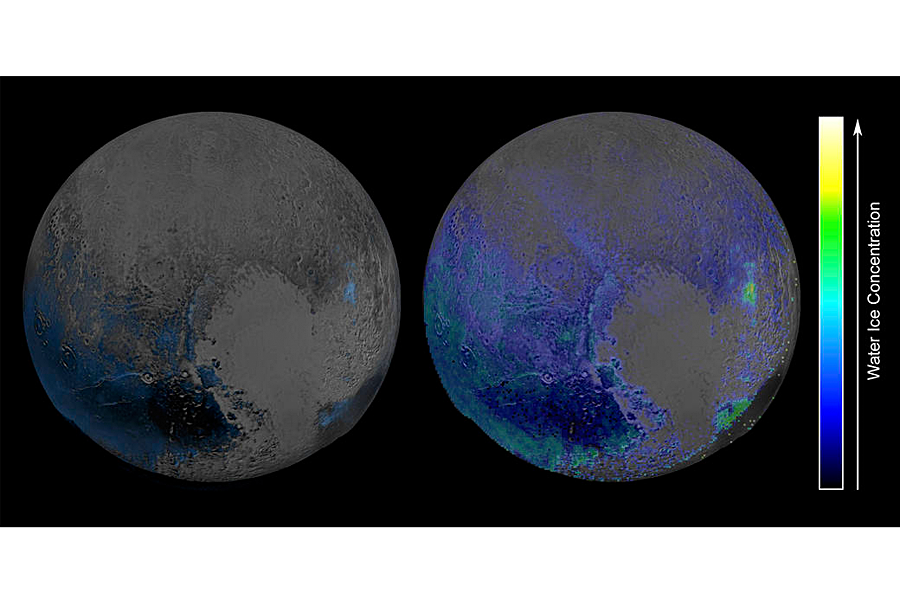Is Pluto an even icier world than previously thought?
Loading...
Pluto may have more ice on its surface than previously thought.
NASA released a new image of the dwarf planet on Jan. 28 revealing vast stores of water ice all over the surface of Pluto.
The false-color image was created from data beamed back from the New Horizons spacecraft during its flyby of the dwarf planet.
On July 14 the spacecraft scanned Pluto for spectral features of water ice twice, from some 67,000 miles away. The resulting infrared observations were then compiled to form an image of the planet highlighting where the signals of water ice appeared as compared with a template spectrum of pure water ice.
But the initial model didn't reveal the full extent of that water ice because there are more volatile ices on top of the water ice. Methane ice in particular masks water ice's spectral signature, so the original map only showed where the water ice overwhelmed the methane or where there wasn't as much methane ice.
The new image was created using a much more sensitive method. To account for the overwhelming signatures of other ices, scientists included all of Pluto's ices in the model before focusing in on the water ice.
Water ice is a sort of crustal 'bedrock' on the dwarf planet. The other more volatile ices, like methane, nitrogen, and carbon monoxide, change seasonally atop that icy crust.
Although the new model reveals significantly more water ice than scientists previously spotted, the researchers still haven't seen much water ice on Pluto's iconic "heart" – the wide, smooth region called Sputnik Planum – and the northern region, Lowell Regio. NASA suggests that these regions are blanketed with other ices, blocking the signature of water ice.
Scientists focus their attention on any hint of H2O on celestial bodies because water theoretically means life. On Earth, water is a necessary condition for life, so scientists suppose that will be the same elsewhere in the universe.
Some moons in our solar system have also been the subject of watery intrigue, as icy moons like Saturn's Enceladus and Jupiter's Europa and Ganymede are thought to have liquid water. Enceladus, for example, spews icy geysers thought to come from a salty ocean beneath a crack-filled icy crust on the moon.








